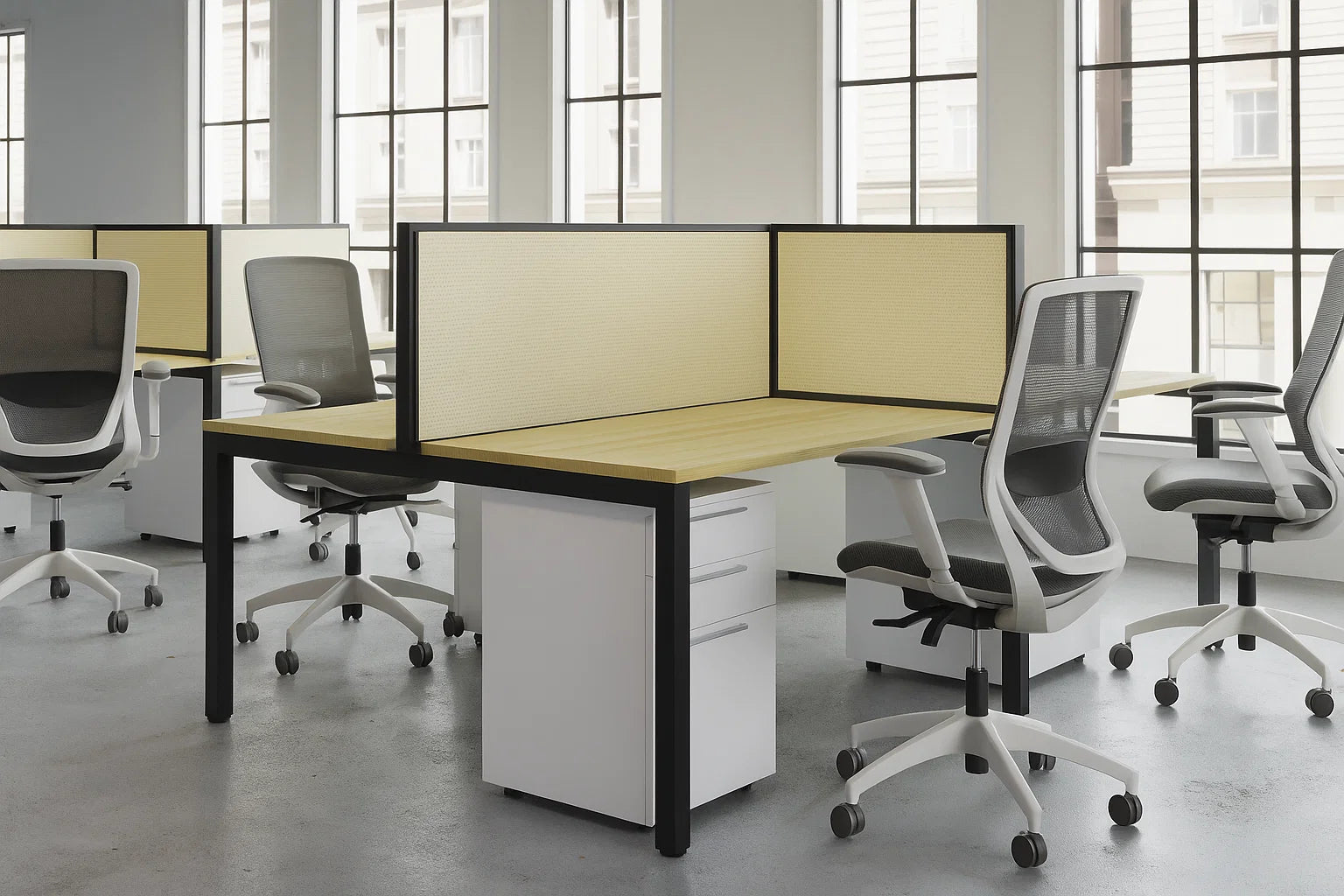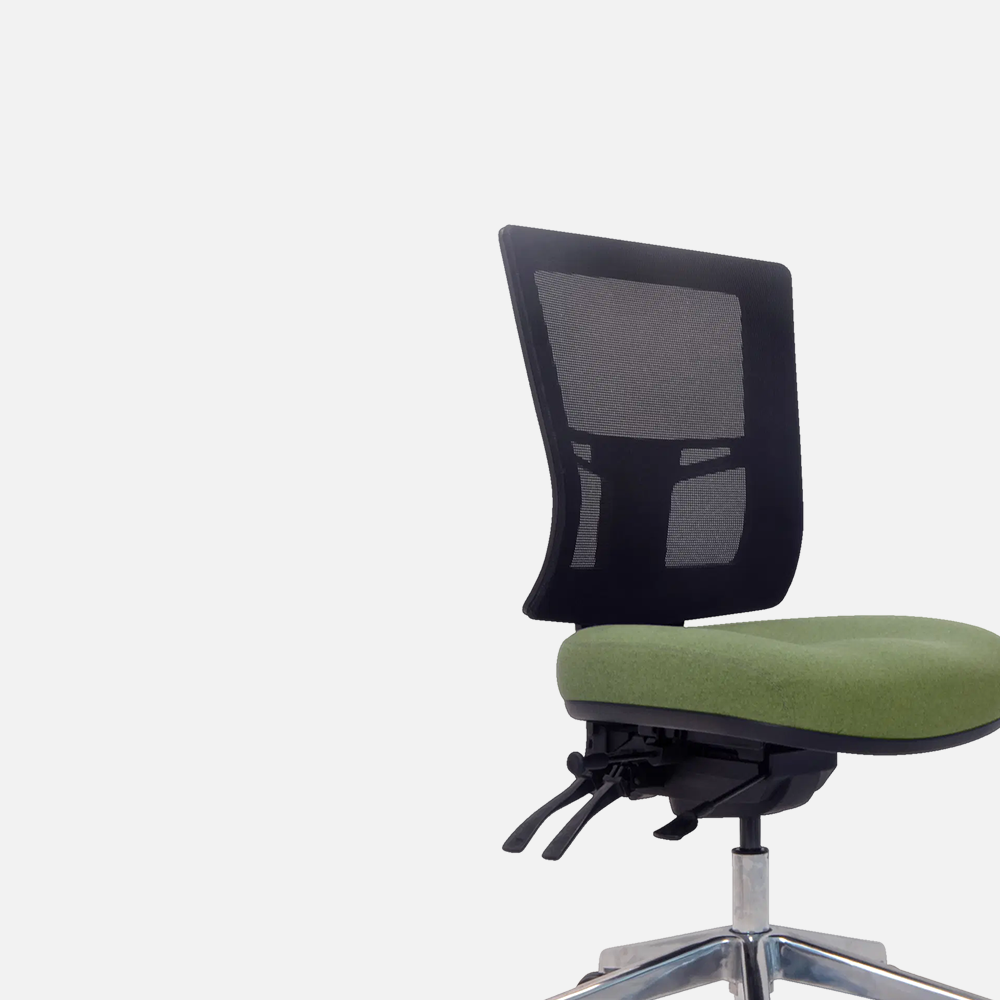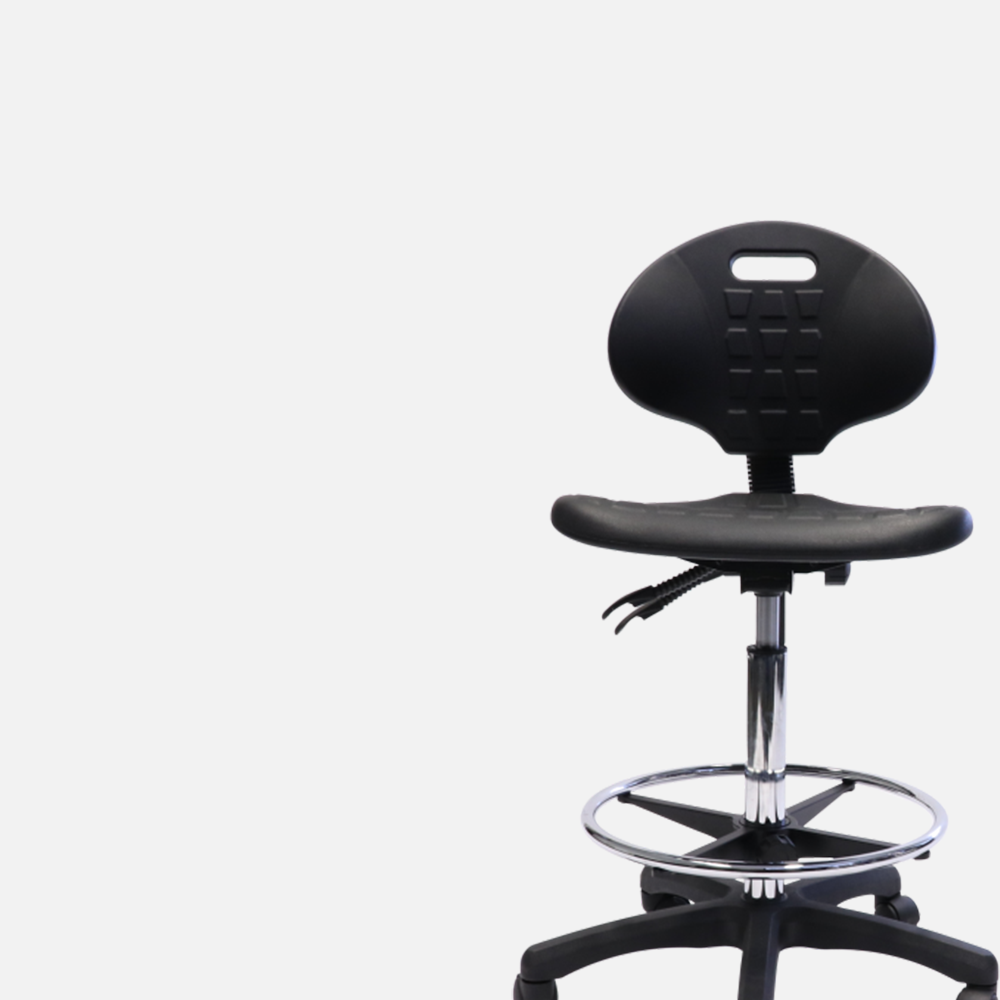Introduction
Ever had to deal with a string of staff off sick due to back pain or shoulder injuries?
If so, you’re not alone. Across Australia’s workplaces — from bustling councils to hybrid corporate hubs — musculoskeletal disorders (MSDs) are a top cause of absenteeism and compensation claims.
Prior to working in the industry, I didn’t fully appreciate just how much an office chair impacts injury rates. These days, I see procurement teams getting savvier — making strategic investments in ergonomic task chairs as a key part of their injury prevention programs.
In this blog, we’ll explore how the right ergonomic task chairs can help prevent common office injuries, boost wellbeing, and support your WHS compliance goals.
The Injury Risks of Poor Seating
Let’s start with the reality many Australian workplaces face.
According to Safe Work Australia:
- Over 50% of serious workers’ compensation claims involve musculoskeletal injuries.
- Common culprits in office settings include:
- Low back pain
- Neck and shoulder strain
- Upper limb disorders
- Repetitive strain injuries (RSI)
Poor seating is often a key contributor — forcing staff into static, awkward postures for hours on end.
Common risks include:
- Chairs with inadequate or no lumbar support → lower back strain
- Non-adjustable seats → poor leg positioning → circulation problems
- Fixed or missing armrests → neck/shoulder tension → upper limb pain
- Lack of tilt/recline → static posture → muscle fatigue and discomfort
How Ergonomic Task Chairs Reduce Injury Risks
Investing in standards-compliant ergonomic task chairs is one of the most effective ways to mitigate these risks.
Here’s how:
1️⃣ Supports Neutral Spinal Alignment
Adjustable lumbar support helps maintain the natural curve of the spine, reducing load on spinal discs.
Without proper lumbar support, staff often adopt a slouched posture — increasing pressure on the lumbar spine and leading to back pain.
2️⃣ Encourages Dynamic Sitting
Synchro-tilt mechanisms and backrest recline promote healthy micro-movements.
Why this matters:
- Movement improves circulation and reduces muscle fatigue.
- Dynamic sitting prevents the static postures linked to neck, shoulder, and back injuries.
3️⃣ Optimises Arm and Wrist Positioning
Adjustable armrests allow relaxed shoulder posture and correct forearm positioning.
Poorly positioned or absent armrests can cause:
- Neck strain
- Shoulder tension
- Increased risk of upper limb RSI
4️⃣ Promotes Lower Limb Circulation
Adjustable seat height and depth ensure:
- Feet rest flat on the floor or footrest.
- Thighs are supported without compressing the underside of the knees.
This helps prevent:
- Leg discomfort
- Circulation problems
- Risk of deep vein thrombosis (DVT) in highly sedentary workers.
What Does the Research Say?
In our Comprehensive Research Report on Ergonomic Office Chairs and Task Seating, we reviewed multiple studies showing that ergonomic chairs:
- Reduce reported low back pain by up to 32% (Black et al., 2018)
- Improve posture and reduce discomfort in neck and shoulders
- Support healthier workstation habits → reducing RSI risk
Real-world case studies show that deploying ergonomic task chairs for injury prevention leads to:
- Reduced MSD claims
- Decreased absenteeism
- Higher staff satisfaction and productivity
Features to Prioritise for Injury Prevention
When selecting ergonomic task chairs for WHS compliance, prioritise these features:
- AFRDI Level 6 certification → proven for 8+ hour commercial use
- Adjustable lumbar support → protects spinal health
- Seat height and seat depth adjustment → supports lower limb circulation
- Synchro-tilt / recline → promotes dynamic sitting
- Height and width adjustable armrests → supports neck, shoulders, wrists
- Durable, supportive seat cushioning → prevents discomfort during long workdays
Explore ergonomic chairs for injury prevention →
Beyond the Chair: Holistic Injury Prevention
Of course, ergonomic chairs are only one part of a smart injury prevention strategy.
Complement them with:
- Monitor arms to promote neutral neck posture
- Sit-stand desks to encourage movement and posture variation
- Training and assessments to help staff adjust their workstation properly
A holistic approach delivers the strongest WHS outcomes — and supports a more engaged, productive workforce.
Real-World Example: Government Department Rollout
In a recent government department rollout I supported, the team replaced ageing fixed chairs with fully adjustable ergonomic task chairs across multiple sites.
Results after 6 months:
- 45% reduction in reported discomfort scores
- 30% decrease in injury-related absenteeism
- Improved staff feedback on comfort and work satisfaction
The department’s WHS team reported that the chairs became a key pillar in their broader injury prevention program — alongside workstation training and sit-stand desk adoption.
FAQs
What is the best ergonomic chair standard for injury prevention?
AFRDI Level 6 certification + compliance with AS/NZS 4438 ensures the chair meets high performance and adjustability standards.
Are mesh chairs suitable for injury prevention?
Yes — provided they have adequate lumbar support and properly designed seat cushioning.
Can ergonomic chairs reduce RSI risk?
Absolutely. Chairs with adjustable armrests and dynamic movement features help minimise static strain and promote healthier arm/wrist positioning.
How can we ensure staff adjust their chairs correctly?
- Provide training during onboarding
- Conduct periodic ergonomic assessments
- Offer quick-reference guides or video tutorials
Should we invest in chairs for hybrid/work from home?
Yes — inconsistent home setups can lead to injury. Providing ergonomic chairs for home offices supports employee wellbeing and compliance.
Conclusion: Smarter Chair Choices, Safer Workplaces
Ergonomic task chairs are a powerful tool in the fight against office injuries.
By investing in the right chairs — and supporting them with holistic workstation ergonomics — your organisation can:
- Reduce injury risks
- Enhance staff comfort and wellbeing
- Improve WHS compliance
- Drive productivity and retention
Explore our curated collection of ergonomic task chairs for WHS compliance.








Leave a comment
This site is protected by hCaptcha and the hCaptcha Privacy Policy and Terms of Service apply.